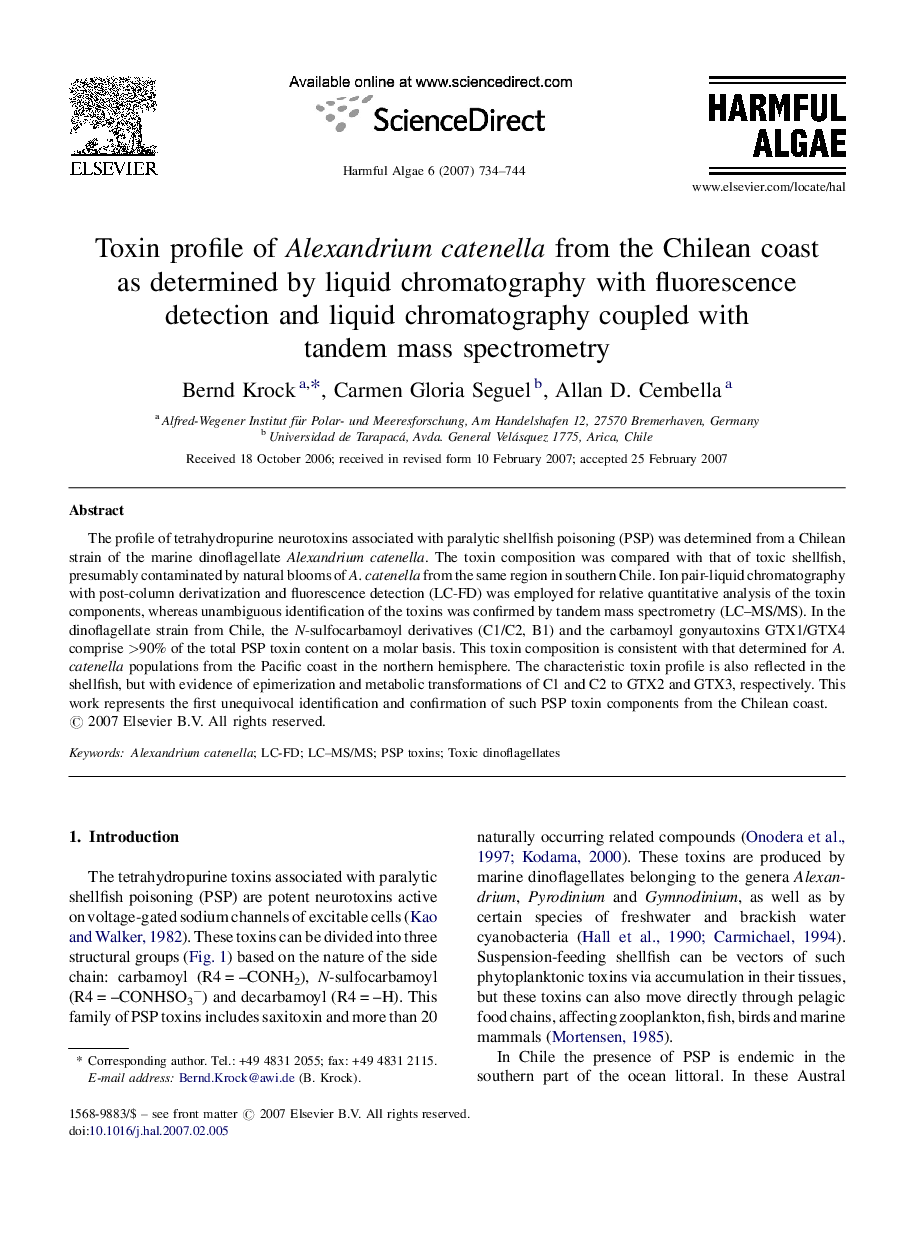| Article ID | Journal | Published Year | Pages | File Type |
|---|---|---|---|---|
| 4546114 | Harmful Algae | 2007 | 11 Pages |
The profile of tetrahydropurine neurotoxins associated with paralytic shellfish poisoning (PSP) was determined from a Chilean strain of the marine dinoflagellate Alexandrium catenella. The toxin composition was compared with that of toxic shellfish, presumably contaminated by natural blooms of A. catenella from the same region in southern Chile. Ion pair-liquid chromatography with post-column derivatization and fluorescence detection (LC-FD) was employed for relative quantitative analysis of the toxin components, whereas unambiguous identification of the toxins was confirmed by tandem mass spectrometry (LC–MS/MS). In the dinoflagellate strain from Chile, the N-sulfocarbamoyl derivatives (C1/C2, B1) and the carbamoyl gonyautoxins GTX1/GTX4 comprise >90% of the total PSP toxin content on a molar basis. This toxin composition is consistent with that determined for A. catenella populations from the Pacific coast in the northern hemisphere. The characteristic toxin profile is also reflected in the shellfish, but with evidence of epimerization and metabolic transformations of C1 and C2 to GTX2 and GTX3, respectively. This work represents the first unequivocal identification and confirmation of such PSP toxin components from the Chilean coast.
